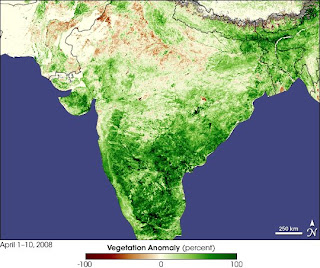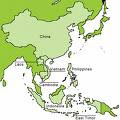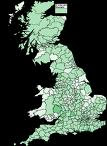Vatican Supports Green Tourism
As the northern hemisphere holiday season opens, the Vatican has issued a set of guidelines for tourists on making their vacations more environmentally friendly. Reuters reports the Vatican has issued a set of suggestions to help tourists minimise or offset environmental damage caused by their pursuit of rest and relaxation. “One can choose to be a tourist at odds with the Earth or in favour of it,” said the Pontifical Council for the Pastoral Care of Migrants and Itinerant People, according to excerpts published by Italy’s ANSA news agency this week. Tips included taking less luggage on gas guzzling airplanes and cars, planting trees to offset tourists’ carbon footprints and choosing vacation spots in closer harmony with nature, ANSA said. Under Pope Benedict and his predecessor John Paul, the Vatican has become progressively more “green”, including installing photovoltaic cells on buildings to produce electricity. Last year, the Vatican hosted a scientific conference on climate change to underscore the role that religious leaders around the world could play in reminding people that damaging the environment is sinful.
Ecotourism in India
Some nice eco-tourism destinations in Southeast Asia
By Rebecca Ruiz, Forbes.com
Inspired by Southeast Asia’s natural beauty and rich culture, many travelers are showing an interest in the area’s alternative “eco” vacations, like the one offered in the Thai National Forests.
Participants on this 10-day tour (airfare and two nights’ stay in Bangkok not included) receive an intensive education in regional ecology and conservation efforts, which range from using biogas to discourage logging and creating communal farms to decrease poaching. Highlights include trips to the Erawan, Budo Sungai-Padi and Khao Yai national parks, where tropical birds, elephants and Asiatic tigers live.
It’s one of many luring travelers to the region. As travel to Southeast Asia continues to rise — an estimated 60.4 million tourists visited the region in 2007 — many visitors are forgoing traditional packages and chain hotels and instead discovering the nascent ecotourism market.
Ecotourism is broadly defined as “responsible” or “ethical” travel during which tourists try their best to minimize environmental impact and ensure their spending and presence benefits the local community. This niche market has grown steadily in recent years.
While it’s difficult to estimate the region’s share of this growth, experts say that examples like a solar-powered lodge in Sumatra, Indonesia, and a conservation-focused tour of the Sukau rainforest in Malaysia are indicative of a growing trend to provide tourists in Southeast Asia with culturally sensitive and environmentally friendly vacations.
“Some of [these countries],” says Ayako Ezaki, director of communications for the International Ecotourism Society, “have taken advantage of the natural and cultural heritage they have to develop tourism. They’ve highlighted those beauties and attracted tourists.”
Enlightening Excursions
Though the market in Southeast Asia is still growing, there are several countries in the region that offer ecotourism options, including Thailand, Cambodia, Laos, Vietnam, Malaysia and Indonesia.
Visitors to northern Laos, for example, can stay at the Boat Landing Guest House, an eco-lodge certified by Green Globe, a company that rigorously evaluates a hotel’s environmental practices. Guests at the riverside bungalows can rest assured the lodge is working to reduce its solid waste through recycling and composting. Tourists can spend their time trekking, rafting and biking in the nearby protected forests.
On a trip through the Sukau rainforest in Malaysia, where the landscape features jungles, paddy fields and rivers, tourists will learn about local turtle conservation efforts and stay at the 20-room Sukau Rainforest eco-lodge where the water is heated with solar power and “passes” have been built into the land to accommodate elephant migration in the area. The lodge charges one dollar extra per international adult guest and uses it to fund projects like wildlife rehabilitation and tree planting.
Travelers worried about their carbon footprints can try a two-week trip to Cambodia, for which the tour operator can purchase carbon offsets. Highlights include visits to Angkor Wat, a 12th-century temple, and the Royal Palace, as well as the knowledge that the economic and environmental impact on communities is closely monitored.
A range of policies and practices like these are important, according to Dr. Eric Crystal, a lecturer at University of California, Berkeley, who has researched the positive and negative consequences of tourism in Southeast Asia.
“Tourism has brought a lot of good and bad things,” Crystal says. But people can also be very conscious, he says, of what they can put back.
What To Know Before You Go on a Eco Holiday
Where the environment is concerned, Drumm says tourists should ask whether or not a tour operator or hotel is certified and incorporates sustainable energy practices like solar power or water conservation.
Companies should also make clear exactly how they contribute to local communities. Volunteer time, financial contributions or donations of needed materials can be effective depending on the location. If a company doesn’t comment on these issues or doesn’t respond to questions, chances are they may be “greenwashing” — just using the “eco-” term as a marketing tool.
“You don’t want to turn your vacation time into labor,” he says of researching ecotourism travel options, “but you have to be pretty determined.”
Awareness of one’s impact often helps convince travelers to explore so-called ethical measures. At the Komodo National Park in Indonesia, for instance, independent travelers contribute about $100 to the local economy, whereas those on a package tour spend half that and those who arrive via a cruise ship have a local impact of only three cents. With this knowledge, a tourist might decide against a cruise and instead book local alternatives and buy keepsakes from native artisans.
“The important thing to note,” says Ezaki, “is that when you say ‘ecotourism,’ it’s not just about one particular group of companies you can travel with. It’s about doing everything possible to make your experience more sustainable and more responsible.”
A new guide for eco-tourism in Ireland
Extract from travelmole.com
IRELAND GREEN GUIDE LAUNCHED
Ecoescape:Ireland is a new handbook to green travel in Ireland. Written by Irish travel writer, Catherine Mack, this new guide follows the recent successful launch of ecoescape: UK. In this groundbreaking book, Catherine gives a personal insight into her top 50 ecoescapes around the country. Full of practical details, including a Slow Travel Toolkit, ecoescape: Ireland helps travellers find ways to responsible escapism closer to home, and provides international visitors greener options for their travels around Ireland, both North and South. “Eco-travel begins at home” Said Laura Burgess, publisher “Which is why ecoescape promotes travel in the UK and Ireland. Here tourism businesses, including hotels and attractions, are cutting emissions, sourcing locally, generating their own energy, moving off-grid and encouraging travellers and visitors to do the same. Through the books and website ecoescape provides a platform for Irish businesses to shout about what they do and to connect ecoescapers to the changes that are making the world a greener place. “I wanted to make a guidebook to share the stories of great people who are, quite simply, trying to make a difference,” says author Catherine Mack. “They are striving to make a living out of Irish tourism, but taking responsibility for the impact it might have locally.” ecoescape promotes slow travel. This involves using our cars less and avoiding flying. Instead we take the train, the bus or the boat and use our bikes and our legs more. Each ecoescape book includes a Slow Travel Toolkit which shows the reader how to enjoy travelling slowly and in the process, discover a new way of taking a holiday. The author travelled slowly and has included details of her cycle, bus and rail routes so readers can do the same. There are also practical tips on how to travel sustainably to Ireland from the UK using the ferry. As ecoescape: Ireland covers the island of Ireland, North and South, it also explores the concept of cross-border tourism in a country that has, in the past, been divided by conflict. Catherine Mack explains, “If you are visiting Ireland, you will quickly discover that natural beauty such as the Mourne Mountain range does not stop at the border.” VISION readers can purchase the book direct and get free post and packing by using the code: EcoUK from: Ecoescape.org
Eco-tourism in Nepal and the Annapurna Area: a wrong impression ?
Forest is cleared each year to construct hotels, lodges and furniture and to provide fuel for cooking, hot showers and campfires. 400,000 hectares of forest are cleared each year. This is a deforestation rate of three per cent per year. One hectare of cleared forests loses 30-75 tons of soil annually. This has led to devastating landslides and floods.
Inadequate sanitation facilities and indiscriminate practices by tourists and trekking groups have left virtual ‘minefields’ of human excreta and toilet paper. Toilets, if they exist at all, are often dangerously close to water sources. Non-biodegradable litter such as plastics, tins and bottles, used primarily by tourists, are disposed of in nearby streams or strewn in piles at the edge of the settlements.
The Annapurna Conservation Area Project (ACAP) was established in 1986 as a response to the above problems. The project, implemented by the King Mahendra Trust for Nature Conservation (NGO), addresses three main aspects simultaneously: nature conservation, human development and tourism management.
Eco-tourism in Laos
A great, ecologically friendly way to get around Lao is by bicycle. With a population of only about 6 million people, Laos has light traffic outside the main towns and biking around the country’s green hills is gaining popularity. It is best to bring your own bike if you plan on a longer trip, but for shorter trips, many tour companies and guest houses rent mid-range mountain bikes. There are currently organized bike tours to the mountains and ethnic villages in Luang Namtha. Other great places to rent a bike are Vang Vieng and Luang Prabang.
Eco-tourism in Bali, Indonesia
Welcome to Indonesia’s Marine Conservation Programs…Bali Indonesia considers wise use and conservation of its rich marine resources essential to the nation’s future. Marine conservation programs in Indonesia vary reflecting the diversity of marine habitants and resources of the nation.
The Government of Indonesia has declared 24 marine protected areas throughout the country. There are plans to expand this to 85 reserves covering 30 million hectares.
Recent initiatives include plans for the management of important marine habitants such as coral reefs and mangroves for sustainable use and conservation. Marine animals are also benefiting from marine conservation efforts. Recent laws have banned the hunting of most turtles throughout the country.
Not only will you enjoy your day trip to Lembongan Island with Bali Hai Cruises, but you also have the opportunity to become involved in our reef watch program at the Reef Appreciation Area. Bali Hai Cruises has recognized the importance and uniqueness of the Lembongan Island Reef and are supporting the Indonesian Government in protecting and managing the reef. To firm our commitment to conservation, Bali Hai Cruises employs a marine biologist to monitor the reef, suggest new ways it can be managed and develop ways that you can learn more about the marine life and fish. The cruises and activities at the Island are designed to create as little disturbance as possible to marine life. Bali Hai Cruises is a member of and supports the Marine Education Society of Australia.
Don’t leave Bali without visiting these truly unique and spectacular Indonesian Elephants. Located in the cool jungle forest of Desa Taro, (20 mins north of Ubud Bali), the Elephant Safari Park offers you the chance to feed and interact with these wonderful creatures in a natural setting. A 30 minute Elephant Safari ride is available to those who wish to do more than just look. Then watch the Elephants as they take a bath, immersing themselves in the cool waters of the lake. Bali Elephant Safaris are suitable for all ages.
Taman Burung Bali Bird Park, Singapadu, near Batubulan. Taman Burung houses over 1000 birds, including varieties from all over Indonesia. One of the aims of the park is to breed endangered species in captivity, including the indigenous Bali Mynah. Those of you who are not necesarily interested in ornithology will be impressed by the two hectares of Bali tropical gardens.
Almost the whole of the western tip of Bali, covering an area of over 750 square km, has been set aside as a conservation area. Included within the park’s boundaries are open savanahs, rainforests, mangrove swamps, coral reefs and Pulau Menjangan (Deer Island), a small island off the north coast of Bali. The park is a haven for a wide range of animals and birds, especially the endangered Bali Starling. Pulau Menjangan, home to the rare Java Deer, can also be visited and has very good diving and snorkeling. To enter the park you must be accompanied by an official guide and in possession of a park permit.
Taman Kupu Kupu, Jl. Batukaru, Sandan Wanasari, Tabanan Regency. Recently opened, Indonesia’s only butterfly park is helping to study, breed and preserve many kinds of butterflies from Bali and all over Indonesia.
Kebun Raya Eka Karya, Bedugul Bali. Established in 1959 these gardens cover over 120 hectares on the slopes of Gunung Pohon (Tree Mountain). The gardens contain a huge collection of trees, nearly 500 varieties of orchid and are rich in birdlife. As a centre for the study of local plants, the gardens also boast a herbarium and library.
Step out of time into the fantastic world that awaits you at the Bali Reptile Park. Enter the dawn of time when Dinosaurs ruled the earth, Komodo Dragons stalked their prey and Crocodiles emerged from the swamps. The Bali Reptile Park can’t give you Dinosaurs, but we still have the Komodo Dragons and Crocodiles, all part of Asia’s most comprehensive collection of reptiles.
Near the village of Sangeh Bali. This forest, of approximately 6 hectares, is filled with giant nutmeg trees that can grow up to 40m high. The main attractions here are the hordes of Balinese monkeys that inhabit both the trees and the temple, Pura Bukit Sari, located in the heart of the forest. Visitors should be aware that these monkeys are attracted to shiny objects, so cameras and jewellery should be left behind or well hidden under clothes or in a bag before setting off to explore Sangeh Bali.
Ubud Bali. This forest is smaller than the one at Sangeh but the monkeys are just as wild.
Near Pupuan, west Bali. Dropping over 100m, this waterfall is spectacular, especially during the rainy season. Be prepared for a bit of a trek up a steep, and at times rough, track to get there.
10km south of Singaraja Bali. Not far from the main road, Gitgit is an impressive 40m waterfall that gushes into a deep pool. A swim here can be very refreshing, although local legend has it that couples bathing here together will eventually separate.









